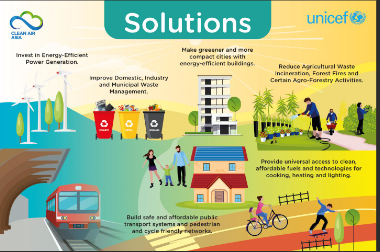Effective Ways to Reduce Air Pollution
- Increase Indoor Ventilation Improving indoor air quality is crucial, especially in less economically developed regions where burning solid fuels and paraffin for heating, lighting, and cooking is common. These practices contribute to indoor air laden with harmful particulates and chemicals, damaging lung health and overall well-being.To enhance ventilation, building controls must ensure adequate airflow. Simple solutions like opening windows, installing vents, and using extraction fans can prevent the accumulation of indoor pollutants. Homeowners should consider retrofitting their properties with spot and dilution ventilation systems, especially in areas lacking proper ventilation, to mitigate health risks associated with poor air quality.
- Active Monitoring of Air Quality Monitoring air pollution is essential for understanding and addressing this pervasive problem. Authorities can utilize advanced photochemical and optical sensor systems, along with multi-pollutant monitoring devices, to measure air quality effectively. The data collected serves several purposes:
- Understanding the Scale of the Problem: Monitoring pollution levels helps both authorities and the public grasp the severity of air pollution in their area.
- Health Alerts: Timely data can inform the public about poor air quality, allowing them to take precautions that protect their health.
- Compliance with Emissions Standards: Regular air quality assessments can ensure that emissions standards are being met, promoting accountability among polluters.
- Evaluating Reduction Strategies: Tracking pollution levels over time helps determine whether implemented strategies for reducing air pollution are effective.
- Adopt Cleaner Transportation Switching to public transport, cycling, or walking instead of using personal vehicles can significantly reduce emissions. For longer distances, consider carpooling or using electric or hybrid vehicles to minimize air pollution.
- Promote Renewable Energy Sources Transitioning to renewable energy sources like solar, wind, and hydroelectric power can significantly decrease reliance on fossil fuels, reducing overall air pollution. Homeowners can also install solar panels to harness clean energy.
- Implement Strict Regulations Governments should enforce stricter emissions regulations for industries and vehicles. Policies aimed at limiting pollutants from factories and promoting cleaner technologies can lead to substantial reductions in air pollution.
- Encourage Green Spaces Planting trees and creating green spaces in urban areas can help absorb pollutants and improve air quality. Trees act as natural air filters, trapping dust and releasing oxygen.
- Educate and Raise Awareness Public awareness campaigns can educate communities about the sources and effects of air pollution. Understanding the impact of everyday actions can motivate individuals to adopt more sustainable practices.
- Reduce Waste and Promote Recycling Minimizing waste and increasing recycling efforts can reduce pollution from landfills and incineration. Supporting policies that encourage waste reduction can also contribute to cleaner air.
By taking these proactive steps—enhancing indoor ventilation, actively monitoring air quality, and implementing a variety of additional strategies—we can significantly reduce air pollution and protect both the ozone layer and public health. Each of us has a role to play in this crucial endeavor, and by working together, we can create a healthier, more sustainable environment for future generations. LET US SAVE OUR MOTHER: EARTH




